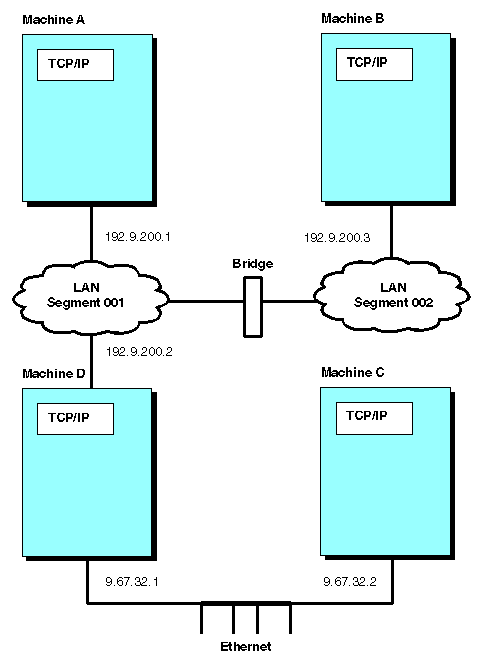Internet Protocol Version 4 (IPv4) and Internet Protocol Version 6 (IPv6)
There are two Internet protocols used to assign addresses to links on a host, Internet Protocol Version 4 (IPv4) and Internet Protocol Version 6 (IPv6). The majority of current internets use IPv4. This protocol is nearly 20 years old and is approaching the limits of the node addresses that its 32 bit addresses allow. IPv6 is the next generation of the Internet Protocol, designed to replace IPv4. Among other advantages, the 128 bit addresses defined by IPv6 provide nearly limitless addresses.
Although IPv6 is expected to eventually replace IPv4, they are likely to coexist for a number of years during the transition.
Figure 1 shows a simple network with a bridge and a router.

Machine D is acting as an IP router and transfers IP datagrams between the class C, 192.9.200, network and the class A, 9.67.32 network. It is important to note that for Machine B to communicate with Machine C using TCP/IP, both Machine D and the bridge have to be correctly configured and working.
TCP/IP uses the HOME statements, defined in the data set hlq.PROFILE.TCPIP, to assign home addresses and associated link names. HOME statements can be updated using the VARY TCPIP command. See the z/OS Communications Server: IP Configuration Reference for more information about both the HOME statements.